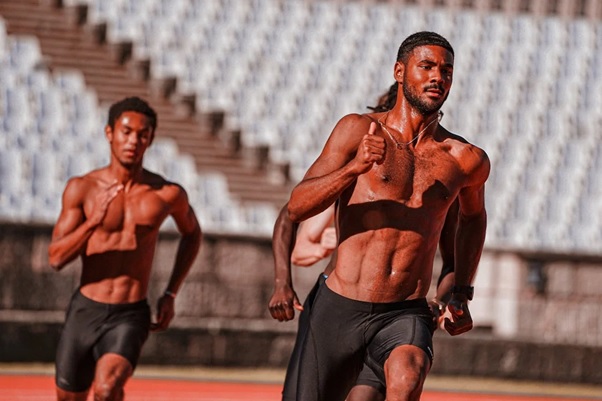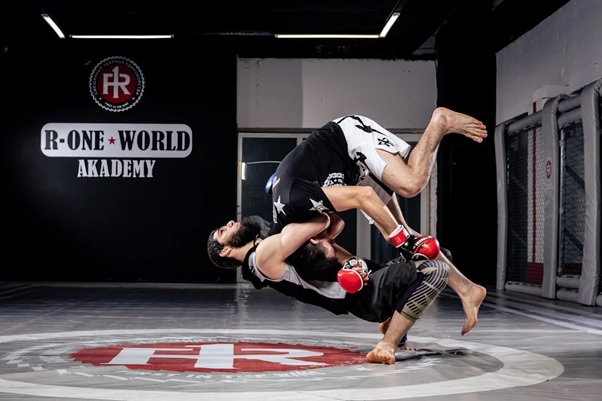Unusual Approaches to Athletic Performance Enhancement
Top-tier athletes are always in pursuit of novel ways to whet their skills, build endurance, and put in top performances. Pushing your body to and beyond its limits is practiced more and more by athletes. Take Dean Karnazes, for example, who claims to have never felt his muscles cramp or seize up – not even running 100 miles. Most people’s bodies build up the acidity in their muscles because they have reached their lactate threshold, causing their bodies to stop in their tracks. But Karnazes biggest obstacle is said to be his mind- proving the human body is capable of so much more than we have ever thought possible. The question is how to train your body to push harder and do better. There are a few lesser-known ways that help an athlete push beyond the limits to win that extra inch. From pushing the brain to perfecting unwinding, let’s take a deeper look at some unconventional means which can make all the difference.
Brain Health: The Hidden Powerhouse
Athletic performance isn’t just about physical strength; it is about mental agility, focus, and decision-making. A sharp mind can make the difference between winning and losing, yet brain health is often overlooked.
Neuroplasticity and Skill Development
Neuroplasticity is really important in the course of learning new techniques in athletes or other game situations; the brain has the capability to change, develop new connections, and reorganize. Challenging the brain with activities such as puzzles or strategy games will enhance this process and improve hand-eye coordination and reaction times. Simple practices – like solving riddles – might spark neuroplasticity and maintain the adaptiveness and resilience of one’s brain.
Diet and Brain Function
Nutrients that feed the brain include omega-3 fatty acids, antioxidants, and B-vitamins. Combine salmon with walnuts, blueberries, and leafy greens to decrease inflammation and enhance cognitive function -all for better on-field decisions. Hydration strategies, such as sipping electrolyte-enhanced water, further support the brain’s processing ability in intense competition.
How Does Sleep Contribute to Memory Consolidation?
Recovery has tons to do with sleep, while the brain consolidates memories, including muscle memory. Athletes who are able to prioritize 7-9 hours of quality sleep are much better at retaining skills learned earlier in training. Afternoon naps between 20-30 minutes help with cognitive boosts without leaving them groggy.
Mental Stimulation Beyond the Sport
Reading, chess, or even card games like solitaire engage the brain in special ways. Such hobbies build focus, strategic thinking, and patience- all high qualities that will enable one to perform better under pressure. Mental diversions offer a kind of active recovery: a way for the brain both to rest and to build some valuable cognitive skills.
Cognitive Training Tools
Modern applications and devices have exercises meant for reaction time, peripheral vision, and decision-making. In this regard, the integration of cognitive training into the daily routine will improve split-second decisions, which are basically indispensable in dynamic sports by athletes. With these sets of exercises consistently done, noticeable performance improvements can be achieved in weeks.
Physical Improvement: More Than Muscles
Of course, there is physical training; however, the tricks lay in the unconventional ways of optimizing one’s physical performance. Such methods raise the bar on strength, flexibility, and resilience- all vital in raising an athlete’s game.
Functional Movement Assessments
Knowing how your body moves can prevent injuries and improve efficiency. Functional movement assessments identify imbalances or weaknesses that an athlete can then tailor their training to their body’s shortcomings. Taking care of these imbalances early can also extend athletic careers because less wear and tear will take place.
Blood Flow Restriction Training
It is achieved through wrapping bands around the limbs during low-intensity exercises, which restrict blood flow. It can simulate high-intensity training benefits and has also been used to reduce the general strain on joints, allowing athletes to recover or build strength more efficiently. In fact, research indicates that as little as 15 minutes of blood flow restriction training may yield similar responses compared with several hours of traditional resistance training.
Thermoregulation Techniques
Cold water immersion and cryotherapy remain popular due to their anti-inflammatory effects, but hot sauna treatments and contrast baths – in which hot and cold are alternated – are increasingly recognized as techniques that enhance blood circulation, recovery, and endurance. These can be used after highly intense workouts to have even greater physiological benefits in the reduction of muscle fatigue than passive recovery techniques alone.
Incorporating Play
This does not have to be through programmed workouts. Other activities, such as martial arts, dancing, and even video games, can serve to enhance coordination, reflexes, and stamina in a manner that is fun and engaging. These promote creativity in athletes so as to enable them to think out of the box in competitive scenarios.
Care of the Joints and Tendons
The serious training can take a heavy toll on tendons and joints. Low-impact sports such as swimming, pilates, and yoga exertion activities, when combined with the intake of collagen-rich foods, will help reinforce these important structures to keep athletes loose and pain-free. Resistance bands during heating can also help provide added protection to those areas by increasing their flexibility and range of motion.
Psychological Training: Mastering One’s Mind
Elite performance is more often than not equated to physical prowess, but it’s about mental resilience, too. Various psychological training techniques may be very instrumental in affording the athlete that much-needed edge to make them sail through pressure with much aplomb.
Visualization and Mental Rehearsal
Athletes who are able to imagine themselves accomplishing their goal will work harder to attain the goal. This neuro-cerebral rehearsal will prepare the neural pathways, and it will make the body more apt to reproduce those actions in the real world. Making such visualizations more alive with sensory information, like the sound of the crowd, feeling, and touching a ball, will help.
Stress Management Skills – Breathing
Diaphragmatic or box breathing calms the nervous system and increases concentration. It is very effective when one is under pressure and helps athletes keep a clear head. These techniques are also useful when used with mindfulness practice to increase emotional regulation.
Personal Reflective Journaling
Journaling gives the time to reflect over the progress, set intentions, and areas that need attention. Self-awareness could therefore give rise to a better growth mindset, boosting overall performance. Reviewing past entries also oftentimes indicates patterns in performance and mood, revealing insights for future improvements.
Mindfulness and Meditation
Mindfulness helps one become more focused, emotionally stable and erases worries about difficulties. Meditation apps or guided meditation sessions, which are especially designed for people in sports, will give them a feeling of balance that will help them in extreme games. Even five minutes of daily mindfulness can greatly reduce anxiety before competitions.
Building a Support System’
Some of the most important aspects of mental resilience include people around an athlete: coaches, teammates, and families. Building these relationships develops emotional support and motivation while reducing burnout and extending confidence. Such a relationship deepens into positive feedback by building a relationship through regular check-ins with mentors or peers.
Professional athletes always seek that extra little edge, and sometimes, the most underappreciated techniques tend to have the largest potential. Redefine your performance by giving precedence to brain health, adopting innovative physical training methods, mastering psychological strategies, and refining methodologies for recovery. You’ll be setting your performance bar well above the ordinary. Not only do these unusual methods help optimize both body and mind, but they will also help you come up with a much more holistic approach to athletic excellence. As you take a closer look at these methods, remember that peak performance itself is a journey, not a destination- every step counts toward excellence.















